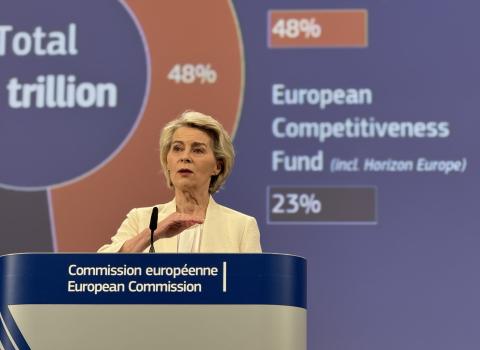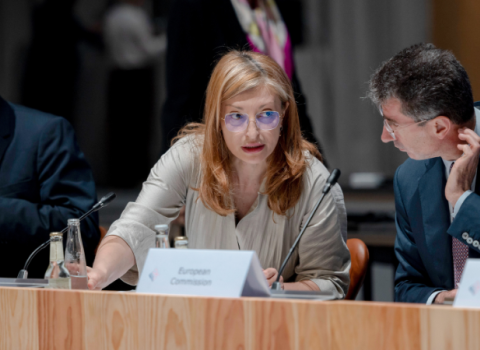Accepted wisdom holds earthquakes can’t be predicted. But a large-scale AI supported sensor system could change that, at the same time building Europe’s skills in real time environmental monitoring and becoming a standard bearer for citizen science

Ramon Alexander Wyss, professor emeritus in Theoretical Nuclear Physics at KTH Royal Institute of Technology, Stockholm. Photo: Youtube.
Around lunchtime on December 2020, a 6.4 Richter scale earthquake hit central Croatia, devastating the city of Petrinja and surrounding villages. People lost their lives and many their livelihoods.
As this terrible event so starkly underlines, earthquakes are still the number one cause of death from natural disasters - and carry huge economic costs to society. They hit regularly Greece, the Balkans and Italy. More rarely, they strike further west, in southern Europe. Lisbon was totally destroyed by a combined earthquake and tsunami 1755. Istanbul is in constant danger and an earthquake there would have major effects on Europe.
But today, an opportunity for Europe to advance research and innovation in the field of earthquake prediction is opening up thanks to the advance of cheap detectors, intelligent sensor systems and deep learning algorithms. This can be part of the planning for Horizon Europoe, the EU’s next big R&D programme starting this year. It is also a global opportunity for putting technology to use for humanity; for instance, the International Telecommunications Union just set up a special committee to study the use of AI in disaster management.
Current knowledge on earthquake monitoring holds that the non linearity of the underlying processes makes it impossible to predict them, though forecasting is advocated as an alternative.
This became the subject of an awkward legal case in the wake of the L’Aquila earthquake 2009, where the deputy head of Italy’s civil protection agency and other prominent seismologists were accused in court of neglecting warnings of an imminent earthquake and indirectly causing manslaughter.
Several phenomena are now thought to be precursors to earthquakes, most notably the emission of radon gas, due to increased stress in the deeper layers of the crust. However, the exact relevance of radon emissions is the source of some controversy among geologists, because experimental knowledge is limited due to a lack of systematic large scale studies.
These developments enable a shift in the paradigm for environmental monitoring. A massive sensor network, monitoring radon in ground water in conjunction with temperature, acidity and related phenomena, would allow a totally new approach to probing stresses in the deep layers of the earth.
Covering earthquake prone areas of Europe at a sufficient density would require something like 10,000 sensors. The analysis of the complex data generated by such a sensor system would be performed by deep learning algorithms and provide real time risk assessment.
A sensor network of this scale would not only increase understanding of earthquake precursors, helping to clarify the longstanding dispute around forecasting versus predicting earthquakes, it would also be a testing ground for AI sensor systems, transforming Europe to a global leader in the field.
At the same time, this is an opportunity for citizens to become involved in research. The maintenance of such a huge sensor network is a significant challenge. But like the smoke detectors now found in almost every household, schools and other public and private bodies could be given ownership and become custodians of each individual sensor, ensuring continuous maintenance of the system.
These custodians would be the main beneficiaries of the system. An online feed of real time data through a mobile application will assure the engagement of all EU citizens in earthquake prone areas.
The earth beneath our feet
It is remarkable that we have been able to study the faintest objects in our universe but have not been able to monitor geological processes at deeper layers of our earth at large scale.
Now, thanks to the development of detectors, sensor systems, networks, mobile applications and AI, natural hazards like earthquakes can be monitored and risk assessed in real time.
Models of public and private ownership of the sensors open up a new path for public awareness and engagement and for the maintenance of these systems.
Last and not least, the pandemic has shown the need for a more resilient Europe. Research and innovation projects that put European citizens at centre stage, through direct participation in scientific projects, are key to this and illustrate why such research merits the support of Horizon Europe.
Ramon Alexander Wyss is professor emeritus in Theoretical Nuclear Physics at KTH Royal Institute of Technology, Stockholm





 A unique international forum for public research organisations and companies to connect their external engagement with strategic interests around their R&D system.
A unique international forum for public research organisations and companies to connect their external engagement with strategic interests around their R&D system.